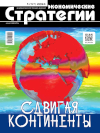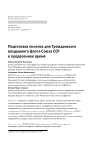Modern technologies in the agricultural sector of Kyrgyzstan: myths and reality (crop production)
DOI: 10.33917/es-5.197.2024.56-61
The study covers key trends in the agricultural sector, institutional foundations for their development in the Kyrgyz Republic, and also presents some mechanisms for their implementation in crop production and the main problems that hinder this process.
References:
1. Analiz razmera i doli rynka tsifrovogo sel’skogo khozyaystva — tendentsii rosta i prognozy (2024–2029 gg.) [Digital Agriculture Market Size and Share Analysis — Growth Trends and Forecasts (2024–2029)]. Mordor Intelligence, available at: https://www.mordorintelligence.com/ru/industry-reports/digitalagriculture-market
2. Kontseptsiya tsifrovoy transformatsii Kyrgyzskoy Respubliki na 2024–2028 gody [Concept of Digital Transformation of the Kyrgyz Republic for 2024– 2028]. Tsentral’nyy bank dannykh pravovoy informatsii Kyrgyzskoy Respubliki, available at: https://cbd.minjust.gov.kg/30-164/edition/6414/ru
3. Zakon Kyrgyzskoy Respubliki ot 18 maya 2019 g. N 65 “Ob organicheskom sel’skokhozyaystvennom proizvodstve v Kyrgyzskoy Respublike” [Law of the Kyrgyz Republic of May 18, 2019 No. 65 “On Organic Agricultural Production in the Kyrgyz Republic”]. Ministerstvo vodnykh resursov, sel’skogo khozyaystva i pererabatyvayushchey promyshlennosti Kyrgyzskoy Respubliki, available at: https://agro.gov.kg/ru/%d0%b7%d0%b0%d0%ba%d0%be%d0%bd%d1%8b/
4. Proekt postanovleniya Kabineta ministrov Kyrgyzskoy Respubliki “Ob utverzhdenii Kontseptsii klasternoy politiki v agropromyshlennom komplekse Kyrgyzskoy Respubliki na 2023–2033 gody” [Draft Resolution of the Cabinet of Ministers of the Kyrgyz Republic “On Approval of the Concept of Cluster Policy in the Agro-industrial Complex of the Kyrgyz Republic for 2023–2033”]. Kabinet ministrov Kyrgyzskoy Respubliki, available at: https://www.gov.kg/ ru/npa/s/4327













